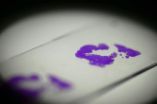(Press-News.org) New psychology research shows that exposing people to alcohol-related words can influence aggressive behaviour in ways similar to actually consuming alcohol.
Researchers found however that this aggressive behaviour occurred when people were subjected to provocation in a way that was not a clear-cut insult.
Although it has been long known that drinking alcohol can increase aggression, a team of five psychologists, including Dr Eduardo Vasquez of the University of Kent in the UK and others from two US universities, demonstrated in two experiments that participants exhibited aggression following exposure to alcohol-related words – known as alcohol priming. This effect was demonstrated in situations when they were provoked in a way that was ambiguous or not obvious.
These findings will have implications for understanding the way people behave in situations where alcohol is present, including bars sporting events and parties.
The study – titled, Are You Insulting Me? Exposure to Alcohol Primes Increases Aggression Following Ambiguous Provocation - was conducted via two experiments involving US undergraduates.
In the first, half of the students were exposed to alcohol primes – for example, the words 'wine', 'beer' and 'whisky' – while the other half were exposed to non-alcohol primes – for example, 'milk', 'water' and 'juice' – prior to receiving feedback on an essay they had written. Participants demonstrated increased aggressive retaliation when provoked by the essay feedback, but only when the provocation could not be clearly interpreted as an insult. An unambiguous or clear provocation produced highly aggressive responses, regardless of whether a person was primed with alcohol or not.
The second experiment showed that the effects of alcohol priming are fairly short-lived – the effect begins to diminish after seven minutes and is gone after about fifteen minutes following exposure to alcohol words. It also showed that alcohol priming influenced aggression by making the ambiguous provocation appear more hostile.
Dr Vasquez, of Kent's School of Psychology, said: 'These results provide another strong demonstration that exposing someone to alcohol-related words alone can influence social behaviour in ways that are consistent with the effects of alcohol consumption.
'Our research also examined the parameters within which alcohol priming is likely to affect aggression. These effects seem to occur primarily when the provocation is not clear-cut and obvious, and are thus more open to interpretation. Under alcohol priming, the interpretation becomes more negative, and people become more aggressive.
'We've shown that people attending events where alcohol is typically present do not have to drink to experience, or be subject to, the aggression-enhancing effects of alcohol, a fact that would seem to suggest caution in all such environments.'
INFORMATION:
The paper, titled, Are You Insulting Me? Exposure to Alcohol Primes Increases Aggression Following Ambiguous Provocation, is published in Personality and Social Psychology Bulletin. Its authors are: William C. Pedersen (California State University, Long Beach); Eduardo A. Vasquez (University of Kent); Bruce D. Bartholow (University of Missouri); Marianne Grosvenor and Ana Truong (California State University, Long Beach). See online version here: http://psp.sagepub.com/content/early/2014/05/13/0146167214534993
Alcohol-related terms can increase aggression
2014-06-05
ELSE PRESS RELEASES FROM THIS DATE:
Future heat stroke treatment found in dental pulp stem cells
2014-06-05
Putnam Valley, NY. (June 5, 2014) – Scientists in Taiwan have found that intravenous injections of stem cells derived from human exfoliated deciduous tooth pulp (SHED) have a protective effect against brain damage from heat stroke in mice. Their finding was safe and effective and so may be a candidate for successfully treating human patients by preventing the neurological damage caused by heat stroke.
The study is published in a future issue of Cell Transplantation and is currently freely available on-line as an unedited early e-pub at: http://www.ingentaconnect.com/content/cog/ct/pre-prints/content-CT1100Tseng.
...
Science Elements podcast highlights chemistry for search-and-rescue missions
2014-06-05
The June feature of Science Elements, the American Chemical Society's (ACS') weekly podcast series, shines the spotlight on devices that use chemistry to locate people trapped in collapsed buildings. The episode is available at http://www.acs.org/scienceelements.
Every second counts when people are trapped in the rubble of a collapsed building. As survivors breathe in a confined space, oxygen levels go down and carbon dioxide levels go up, a potentially lethal combination. People also can have severe injuries from the falling walls and other debris.
In the episode, ...
State of wildland fire emissions, carbon, and climate research
2014-06-05
RIVERSIDE, Calif.—Scientists know that wildland fire emissions play a significant role in the global carbon cycle and that its principal component – carbon dioxide – is a primary driver of climate change. But predicting and quantifying the effects of potential future emissions is a difficult process requiring the integration of complex interactions of climate, fire, and vegetation. The current state of knowledge, critical knowledge gaps, and importance of fire emissions for global climate and terrestrial carbon cycling is the focus of nine science syntheses published in ...
Team demonstrates continuous terahertz sources at room temperature
2014-06-05
Imagine a technology that could allow us to see through opaque surfaces without exposure to harmful x-rays, that could give us the ability to detect harmful chemicals and bio-agents from a safe distance, and that could enable us to peer so deeply into space that scientists could better understand the formation of the universe.
All of these scenarios are possible with terahertz radiation, electromagnetic waves with lengths that fall between microwaves and infrared light. However, the potential of terahertz waves has yet to be reached because they are difficult to generate ...
Race could be a factor in head and neck cancer survival rates, MU researchers find
2014-06-05
COLUMBIA, Mo. — The national survival rates for African-Americans diagnosed with head and neck cancer have not improved in the last 40 years despite advances in the treatment and management of the disease, University of Missouri School of Medicine researchers have found in a new study.
More than 52,000 men and women in the United States currently are living with head and neck cancer. Using data from the National Cancer Institute's Surveillance, Epidemiology and Ends Results (SEER) program, MU researchers under the guidance of Mosharraf Hossain, M.D., assistant professor ...
Can mice mimic human breast cancer? MSU study says 'yes'
2014-06-05
Scientists have routinely used mice to replicate aspects of human breast cancer in an effort to find a cure to the most common type of cancer among women.
But how effective are these preclinical models in actually mimicking the disease and giving scientists the ability to develop real comparisons?
Eran Andrechek, a physiology professor in the College of Human Medicine at Michigan State University, has discovered that many of the various models used in breast cancer research can replicate several characteristics of the human disease, especially at the gene level.
The ...
Design of self-assembling protein nanomachines starts to click
2014-06-05
A route for constructing protein nanomachines engineered for specific applications may be closer to reality.
Biological systems produce an incredible array of self-assembling, functional protein tools. Some examples of these nanoscale protein materials are scaffolds to anchor cellular activities, molecular motors to drive physiological events, and capsules for delivering viruses into host cells.
Scientists inspired by these sophisticated molecular machines want to build their own, with forms and functions customized to tackle modern-day challenges.
The ability to ...
Study discovers the downside of African-American success stories
2014-06-05
African-Americans such as Brown University President Ruth Simmons, Nobel Laureate Toni Morrison, and of course President Barack Obama have reached the pinnacle of success in historically white domains. But a new study finds there is a downside to African-American success stories: these positive examples prompt white Americans to think less successful African-Americans simply need to apply more effort to achieve their own success.
The findings are reported in the paper, "If He Can Do It, So Can They: Exposure to Counterstereotypically Successful Exemplars Prompts Automatic ...
Has solar activity influence on the Earth's global warming?
2014-06-05
A recent study demonstrates the existence of significant resonance cycles and high correlations between solar activity and the Earth's averaged surface temperature during centuries. This provides a new clue to reveal the phenomenon of global warming in recent years.
Their work, entitled "Periodicities of solar activity and the surface temperature variation of the Earth and their correlations" was published in CHINESE SCIENCE BULLETIN (In Chinese) 2014 No.14 with the co-corresponding authors of Dr. Zhao Xinhua and Dr. Feng Xueshang from State key laboratory of space weather, ...
Gestures research suggests language instinct in young children
2014-06-05
Young children instinctively use a 'language-like' structure to communicate through gestures.
Research led by the University of Warwick suggests when young children are asked to use gestures to communicate, their gestures segment information and reorganise it into language-like sequences. This suggests that children are not just learning language from older generations, their preference for communication has shaped how languages look today.
Dr Sotaro Kita from Warwick's Department of Psychology led the study with Dr Zanna Clay at the University of Neuchatel, Ms Sally ...




